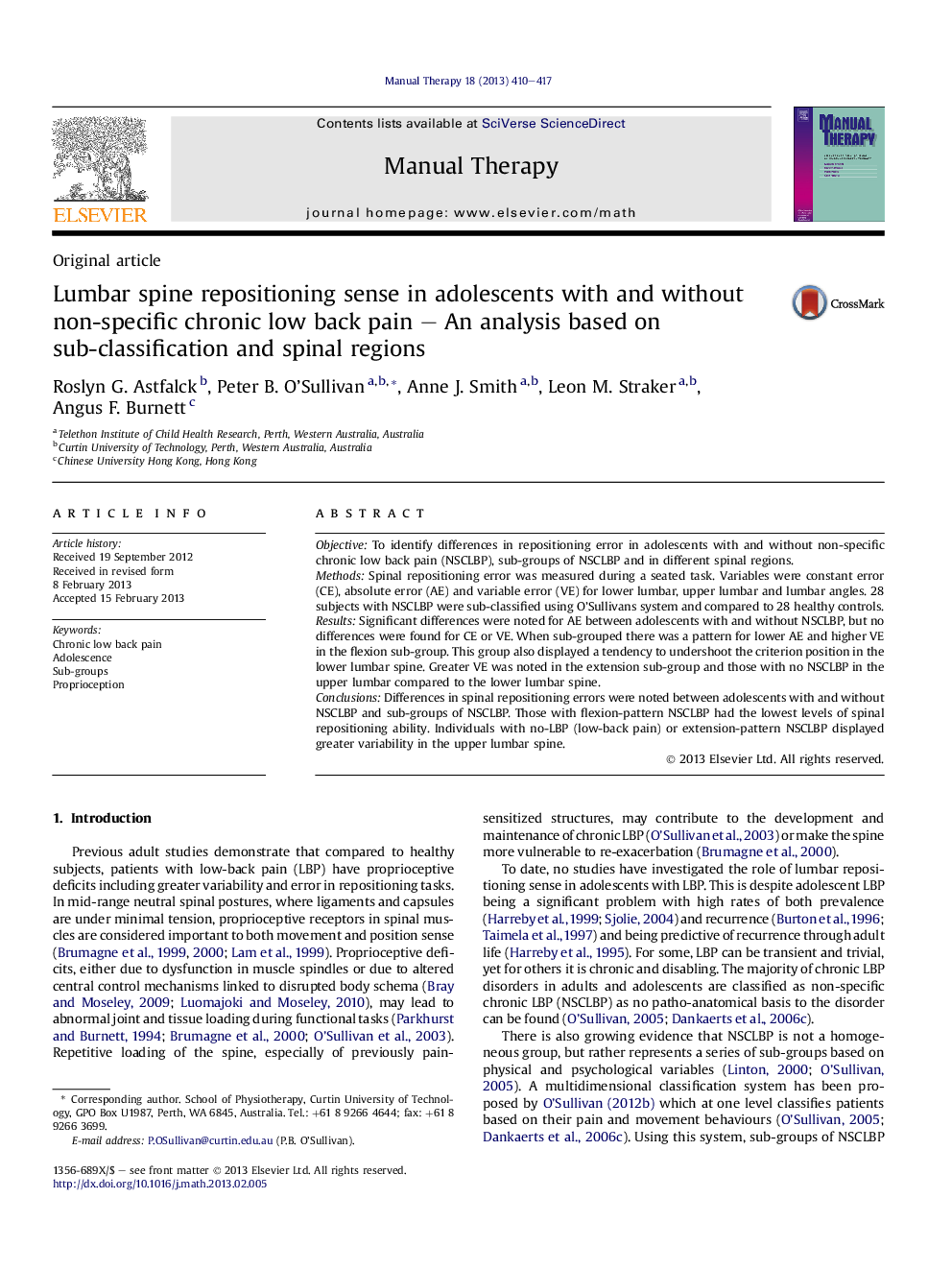| Article ID | Journal | Published Year | Pages | File Type |
|---|---|---|---|---|
| 2625049 | Manual Therapy | 2013 | 8 Pages |
ObjectiveTo identify differences in repositioning error in adolescents with and without non-specific chronic low back pain (NSCLBP), sub-groups of NSCLBP and in different spinal regions.MethodsSpinal repositioning error was measured during a seated task. Variables were constant error (CE), absolute error (AE) and variable error (VE) for lower lumbar, upper lumbar and lumbar angles. 28 subjects with NSCLBP were sub-classified using O'Sullivans system and compared to 28 healthy controls.ResultsSignificant differences were noted for AE between adolescents with and without NSCLBP, but no differences were found for CE or VE. When sub-grouped there was a pattern for lower AE and higher VE in the flexion sub-group. This group also displayed a tendency to undershoot the criterion position in the lower lumbar spine. Greater VE was noted in the extension sub-group and those with no NSCLBP in the upper lumbar compared to the lower lumbar spine.ConclusionsDifferences in spinal repositioning errors were noted between adolescents with and without NSCLBP and sub-groups of NSCLBP. Those with flexion-pattern NSCLBP had the lowest levels of spinal repositioning ability. Individuals with no-LBP (low-back pain) or extension-pattern NSCLBP displayed greater variability in the upper lumbar spine.
